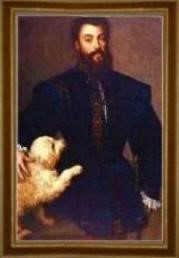Havanese, the national dog of Cuba is a small, sturdy dog of immense charm. He is slightly longer than tall, with a plumed tail carried forward over his back. His adorable springy step is a result of his short front legs and his playful personality. The Havanese has beautiful soft, silky or hair, not fur, (no shedding!) which comes in red, white, gold, cream, black, silver, chocolate or fawn with various combinations of coloring. The Havanese coat is often kept in a short puppy trim to facilitate easy grooming.
Havanese are highly intelligent and easy to train, often learning new tricks with only one or two exercises. Their patient gentle personality make them excellent house dogs that readily coexist with other pets in the home. They are a happy-go-lucky dog. “Because they are small but not yappy, Havanese are good travel companions and appropriate for the RV lifestyle.” Due to their friendliness and outgoing personality, they are often used as therapy and emotional support dogs. “The Havanese has a classically winning temperament, always willing to please and quick witted …and has an aptitude for performing in obedience competitions. The breed’s history of circus tricks aids him in agility,” as well as their trainability and nimbleness. (Quotes from Vetstreet)
They can be a sensitive breed, so positive training methods with small treats work well. Socialization from an early age is very important. They should be exposed calmly to a wide variety of new places and people, with experiences that are positive and not intimidating.
Historical Excerpt:
With the advent of the Cuban revolution in 1959, the class of Cubans who owned Havanese were the first to leave. A handful of them found their way to the USA and by the end of the 70’s a gene pool was being rebuilt. All the Havanese in the world today, save those from the “iron curtain” countries and those remaining in Cuba, stem from those 11 little immigrants. Remarkably, through all their travels, the Havanese type has remained virtually unchanged from that of the dogs owned by Spanish aristocrats in the eighteenth century. (Quote from “History of the Havanese” @ havanese. org)
Portrait of Federico II Gonzaga with his Havanese by Titian


